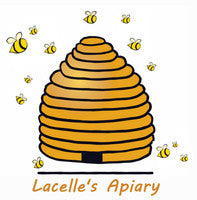I've been getting a few calls about lost colonies this winter. These are some of the common early winter deaths that have been described to me;
- My hive was big and looked very healthy in the Fall.
- I noticed a lot honey is left in the top supers.
- There isn't a lot bees in the hive now, maybe the size of a grapefruit.
- There are hardly any bees on the bottom board.
- If you look closely in the cells around the brood, you will see white crystals stuck to the cell walls, looking like someone sprinkled coarse salt in the brood nest.
Sound familiar? These are common symptoms for varroa associated viruses.
Over the years i have heard these symptoms so many times that they have become classic symptoms.
The big colonies- Beekeepers are often surprised that their biggest hives are the ones that are gone first. To me this makes sense as the colonies that have the most capped brood are the ones at risk of having a high population of varroa.
This colony had a large brood nest(indicated by the dark comb)in this frame, taken from the top deep box, and a large cluster going into winter ( indicated by the large amount of honey that is eaten away where the winter cluster started. Varroa were never monitored or managed in this hive, and it was probably dead by February or sooner..
Small Custer-Varroa levels peak right when the winter bees are getting formed. Bees that emerge from varroa infested cells are weakened, and are riddled with viruses. Varroa mites are notorious
